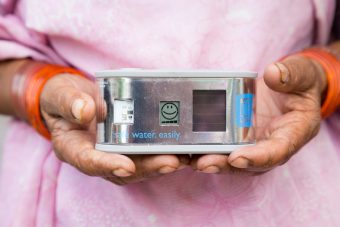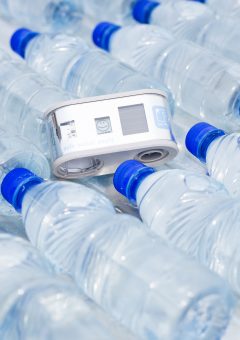
The perfection is in simplicity, which also goes for simple inventions. Thus, a small device, called WADI, which does not require batteries, chemi-cals, or spare parts, can save a large part of the world struggling with a lack of access to potable water. WADI is simply placed on plastic bottles filled with water, which are then exposed to the sun.
After measuring UV radiation, signals once disinfection process with solar energy is completed. The device was designed by Austrian electrical engineer Martin Wesian after he contracted cholera due to microbiologically defective water while staying in Venezuela.
The device itself, designed in Vienna, is manufactured by Helioz in the Austrian state of Vorarlberg and India.
“The devices will soon be placed on the roofs of houses to disinfect a larger amount of water. In that way, a school or a smaller village can be supplied with clean potable water “, Mr Wesian says.
“Its ability to supply clean water brings out the advantage of WADI technology which is the reduction of carbon dioxide emissions since water boiling is no longer necessary,” Mr Schmiedmaier says, CEO of Helioz, which is active in Africa, India, and Bangladesh, cooperating with local charities and government institutions.
In focus:
The most affected areas are Africa and Asia, where, due to contaminated water and poor hygienic conditions, diseases such as cholera, typhus and dysentery are still taking their toll. The few available water sources are used for laundry, bathing, toilets, and watering animals, but the same water is often used for drinking and cooking.
In these areas, people must go far to get clean water, which is even more difficult in Bangladesh and Uganda due to the consequences of the climate crisis. Helioz, in cooperation with local partners, helps families and schools in these areas to get potable water. And all it takes is solar power for water disinfection and a WADI UV meter. Water disinfection is done using solar energy. The procedure is as follows: water is taken from rivers, wells, and puddles and placed in the sun in PET plastic bottles; UVA radiation kills pathogenic germs in the water, while WADI measures UV radiation, i.e., as long as it takes for the water to be ready to drink.

This disinfection process with solar energy is called SODIS and was recognized in 2007 by the World Health Organization as a simple and inexpensive method for water disinfection. WADI represents a SODIS indicator that visualizes this process. It works with the help of one solar cell and does not require any maintenance or spare parts, so no additional costs are incurred. SODIS is used only for microbiologically impure water, and it cannot be applied to water contaminated with metals or chemicals. Also, the efficiency of SODIS depends on the climate. When it comes to SODIS limitations, the most significant one relates to the difficulty of estimating the time it takes for the sun to disinfect contaminated water.
The duration of the process depends on the UV radiation of the sun, which also depends on several other parameters: prevailing weather conditions (clouds, rain), sea level (the higher altitude speeds up the process), the degree of latitude (the closer to the equator, the faster) and possible air pollution. This is reflected in the process duration, which can take from several hours to two days or even longer. Under normal circumstances, as proven by WADI, the SODIS process takes only a few hours (about three to four).
Prepared by: Tamara Zjačić
You can read the whole article in the new issue of Energy portal magazine RECYCLING.



